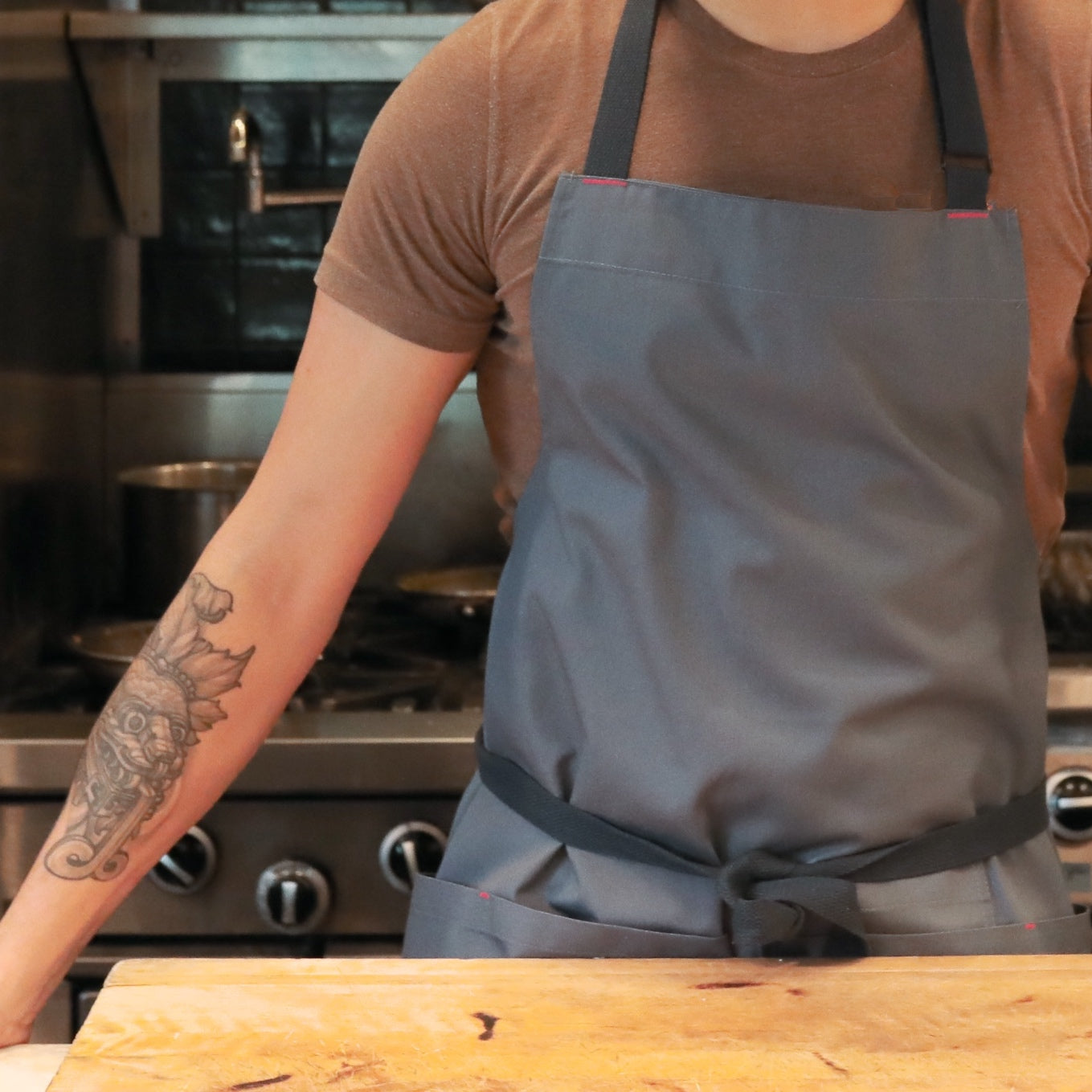Your Cart is Empty
FREE SHIPPING FOR ONLINE ORDERS OVER $100
FREE SHIPPING FOR ONLINE ORDERS OVER $100
Shop

Most Useful Cooking Techniques Everyone Should Master
January 31, 2024 4 min read
Fundamental Cooking Techniques in any Kitchen for Anyone who Loves to Cook
By no means is this an extensive list, but in this blog post we share a few of the most valuable cooking techniques that are must-knows for creating many different recipes and having fun in the kitchen!
KNIFE SKILLS
Probably the most coveted kitchen technique every home cook aspires to when watching Top Chef! Here's a short video from Medium Rare's Chef Cam Dobranski with basics to get you started:
P.S. Chef Cam is rocking the Medium Rare Freddy Apron in this video.
BRINING
What's the secret to the most tender, juicy chicken? Brine it first! There are two types of brine: dry and wet.
Dry brines are best used with larger cuts of meat, think whole birds and turkeys and for concentrating flavour. To dry brine, generously salt your meat (we suggest using kosher salt) and add herbs of your liking. Rosemary, thyme, garlic and paprika are always safe bets. Dry brine for several hours for smaller cuts like steaks and 1-3 days for larger cuts, like a whole turkey.
Wet brines are ideal for lean cuts of meat, so try this next time your cooking chicken breast or pork loin. Mix 3 tbsp of kosher salt with 4 cups of water. Brine meat overnight in fridge.
And to make sure you stay clean while your prepping, throw on our one of our Senor Prep aprons!
PAN FRYING
Panfrying is a simple way to add lots of flavour and texture! Whether your trying to get a crispy crust on your tofu or a nice sear on your steak, what is most important when panfrying is the heat of your pan. You'll want high heat to start. You want to get your pan just to the point when the oil starts to smoke, then drop your meat, tofu, veggies in. This will naturally drop the temperature of the pan. Let it briefly come back up smoking point and then reduce to medium heat and control as necessary to finish cooking.
DEGLAZING
First, why do you deglaze a pan? You've probably noticed when panfrying meat or vegetables that little bits of caramelized goodness get stuck to the pan. These little bits equal flavour that you don't want to leave behind, but incorporate into your dish.
So how do you deglaze? Once you've fried your meat or vegetables, keep the pan hot, pour a small amount of liquid into the pan, allowing all those flavourful bits to become free. Add liquid according how thick or saucy you want it and simmer as necessary. Grab your tasting spoonto give your sauce a try.
Best liquids to deglaze with will depend on the flavour profile you are looking for. Some of the most common are red or white wine, port, sherry or beer. But you can also always deglaze with a stock or juices for a non-alcoholic option.
BRAISING
Great for slow cooking foods and developing rich flavours! Braising involves slowing simering foods in a flavourful liquid in the oven. Braising is best done using some of the above techniques. We recommend that your start with panfrying to brown your meat and/or vegetables. Then deglaze your pan. Then add the rest of your brasing liquid and slow cook in the oven. To slow braise, cook at 325 degrees and think low and slow.
And to make sure you always braise in style, don't forget to throw on your favourite Medium Rare apron.
STEAMING
Steaming is versatile way of cooking and a great way to keep the nutritional value of your food. There's lots of ways to steam in a basket or bamboo steamer on the stovetop, in your microwave or even in your instapot. Here's few tips when stovetop steaming:
- Make sure you bring your water to a boil before adding the food or veggies to be steamed.
- The thought of bland food makes us shiver as much as a bland apron! So, consider adding aromatics to your water to flavour your food as it cooks. Think salt, garlic, ginger and herbs.
- If you are mixing multiple veggies, add them to your steaming basket according to their different cooking times so that you don't end up with mushy green beans and still crunchy carrots.
- BE CAREFUL! Steam is extremely hot and burns are no fun!
POACHING
You can poach vegetables, fruit, fish, meat and of course eggs. And you can poach in a variety of liquids. The basics of poaching include:
1) Prepare your poaching liquid
2) Bring the liquid to a slow simmer
3) Carefully place your seasoned food into the poaching liquid
4) Cook until done and remove
Egg Poaching Tips: Add 2 tbsp of vinegar to your poaching water. Do not salt your water. Crack eggs into a small bowl or ramekin and gently pour into simmering water. Cook approximately 3 minutes for soft poach and 5 minutes for hard poach eggs.
ZESTING
When it comes to zesting, it's less about the technique, and more about the tool and if you are using something that resembles a vintage cheese grater you are making your life way more difficult than it needs to be. Get yourself a high quality Microplane Zester/Grater! Makes a perfet parmesan cheese grater too!
Whether you are honing your knife skills, experimenting with your new zester, or poaching the perfect egg we hope you are doing it in some awesome Medium Rare gear! Because no matter what you like to cook, we've got your back, but mostly your front 😉
Subscribe
Sign up to get the latest on sales, new releases and more …
